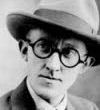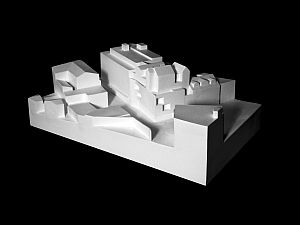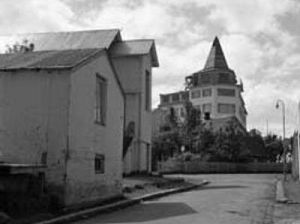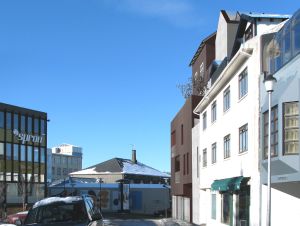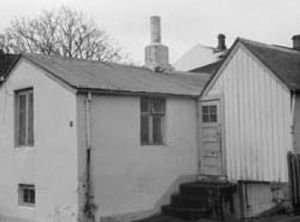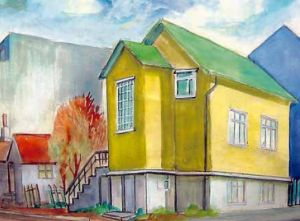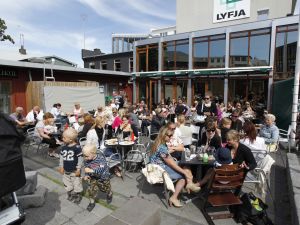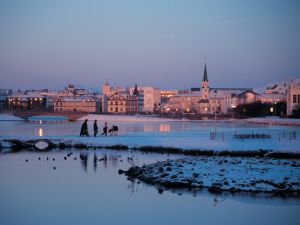AN ARTIST EMERGES - LAXNESS
Early in the 20th century the family in Vegamótastígur 9 had two lodgers, young men, that later turned out to be national treasures among artists, the painter Jóhannes Sveinsson (1909-1911) and Halldór Guðjónsson from Laxnes (1914-1916). One can read abouth their time in the house in their biographies and own writings, in a letter 1953 from Jóhannes to his mentor and master, Ásgrímur Jónsson, who gave him his first formal lessons in painting by visiting him in the house and Halldór Laxness‘ Sjömeistarasaga memoirs from 1978.
Halldór Laxness (1902-1998) stands head and shoulders above the other Icelandic writers of the 20th century. He was prolific during his long career, writing 13 major novels, five plays and a dramatisation of one of his novels, not to mention his collections of short stories, essays and memoirs. His books have been translated into 43 languages and published in more than 500 editions. His career was unique, the diversity of his works almost without parallel, and with every book he can be said to have approached his readers from a new and unexpected direction.
Laxness’s ideals and beliefs changed with time, as reflected to a certain extent in his works. He began his writing career as a Catholic, then turned to socialism, but later lost interest in all dogma – except perhaps Taoism. He never attempted to disown the earlier views which he subsequently repudiated, regarding them instead as an instructive part of his psychological development. Yet from the earliest period to the latest it is possible to detect the same basic themes in his books. He looked at things differently from other people, his writings were often barbed, and yet he always managed to see the comic aspects of his characters and their actions. His sympathy was invariably with the underdog. Source and further reading: Gljufrasteinn.is.


